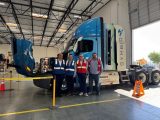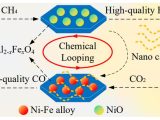
Hydrogen Storage Breakthrough: Rolls-Royce’s Cryogenic Patent Charts a Path to Zero-Emission Flight
October 16, 2025Ever wondered what it’d really look like to swap kerosene for hydrogen in jet engines? Rolls-Royce plc just dropped a patent that might get us there. Their newly published patent lays out a slick cryogenic hydrogen storage and delivery system that works both on brand-new turbines and retrofitted fleets, giving airlines a choice: pure hydrogen, kerosene or a mix of both. Picture this: liquid hydrogen tucked into tanks mounted outside the fuselage, then routed through a pre-heating unit before it reaches specially adapted burners—all wrapped up in extra containment layers to dial down leak and fire risks. It’s hydrogen storage like you’ve never seen before.
Unlocking Hydrogen Storage at 40,000 Feet
Switching from jet fuel to hydrogen is far more than hanging a tank under the wing. Liquid hydrogen needs to stay frosty—think lie-in-your-freezer cold—and that calls for serious insulation and backup systems. Rolls-Royce’s scheme tucks cryogenic tanks on the airframe’s exterior, freeing up precious cabin or cargo space and keeping potential troublemakers at arm’s length from passengers. A maze of redundant pipes and isolation valves means a single hiccup won’t take down the whole network. And when it’s go-time, hydrogen zips through a preheater—powered by engine waste heat or electric elements—so it hits the combustion chamber just right.
This isn’t the company’s first dance with hydrogen. Back in 2024–25, they filed patents covering hydrogen-ready turbines and novel fuel management rigs, spearheaded by CEO Tufan Erginbilgic. He’s been straight-up about the roadblocks: “significant technical and economic challenges” still lie ahead before hydrogen can moonwalk into mainstream aviation. Yet, the idea of retrofitting just a handful of engines gives carriers a low-stakes way to trial hydrogen production and usage without gutting their entire fleet.
From Engines to Alliances
Nobody transforms an entire industry solo. Rolls-Royce co-founded the Hydrogen in Aviation alliance alongside easyJet and Airbus, and they’re pooling resources—think shared testbeds, simulators and data—to fast-track engine certification and safety protocols. easyJet’s all in, eyeing short-hop routes across Europe where slashing CO₂ on busy flights can really move the needle. Airbus brings its airframe expertise and aerodynamic wizardry, while Rolls-Royce supplies the propulsion know-how. Together, they’re building a living lab that could set the bar—if regulators are ready to keep up.
Bridging the Infrastructure Gap
Flying hydrogen planes is one thing; fueling them is a whole other can of worms. Airports will need to install cryogenic bunkers, secure liquid-hydrogen transport links and beef up storage facilities—all hinging on a steady supply of green hydrogen. Right now, most hydrogen’s cooked up from natural gas, which puts a dent in the zero-emission case. Europe’s big on ramping up electrolyzers powered by wind and solar as part of its push for sustainable energy, but scaling that production to match airline demand will take years and serious cash. Plus, green hydrogen can cost three to four times more than traditional jet fuel on an energy-equivalent basis. Airlines will be hunting for incentives, carbon pricing or fresh markets before they bite.
Navigating the Road to Zero-Emission Technology
Aviation clocks in at roughly 2% of global carbon emissions, and bodies like IATA and the FAA have lined up net-zero targets for 2050. Hydrogen offers a clean flight path—no carbon soot, just water vapor—but it’s stuck in a classic chicken-and-egg loop: carriers want refueling stations before they buy hydrogen aircraft, and airports won’t build those stations without committed flyers.
That’s where retrofits come in. By tweaking existing engines to sip hydrogen, Rolls-Royce lowers the entry bar for airlines. They can start small, buy test volumes, gather real-world feedback and build demand organically. It’s a pragmatic move, acknowledging that swapping every plane on the tarmac overnight is pie in the sky.
What’s Next?
This patent is just the kickoff. Expect flight trials toward the end of the decade, followed by a scramble to clear certification hurdles and crunch actual performance numbers. Meanwhile, alliances will deepen, more hydrogen infrastructure projects will spring up and regulators will have to play catch-up. Zero-emission technology in aviation might sound like sci-fi today, but this blueprint from Rolls-Royce shows how fast it can become reality.
About Rolls-Royce plc
Founded in 1906 and based in the United Kingdom, Rolls-Royce plc leads the charge in aerospace and defense engineering, specializing in power and propulsion systems. The company is pouring investment into hydrogen and hybrid solutions through R&D hubs in the UK Midlands and partnerships that span the full aviation value chain.



 With over 15 years of reporting hydrogen news, we are your premier source for the latest updates and insights in hydrogen and renewable energy.
With over 15 years of reporting hydrogen news, we are your premier source for the latest updates and insights in hydrogen and renewable energy.